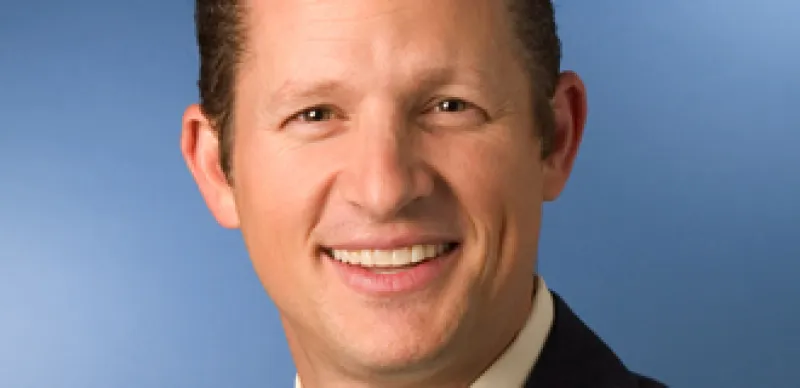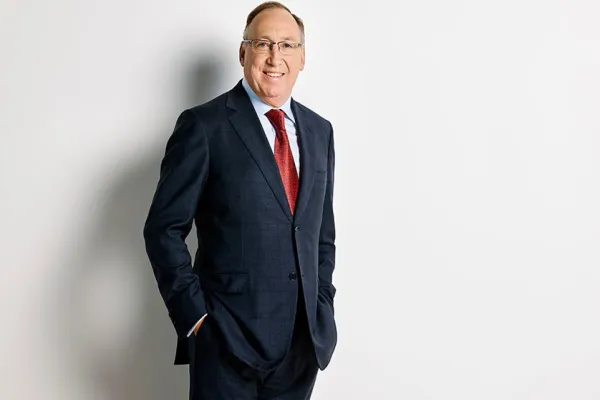In the spring of 2000, as the Nasdaq composite index was soaring to record highs amid investor euphoria over anything Internet, Financial Engines CEO Jeffrey Maggioncalda assembled his troops at the company’s Palo Alto, California, headquarters. He was preparing to take the venture public, he told them. Within days, however, the Nasdaq began to free-fall, eventually dropping about 80 percent. Financial Engines, which at the time provided investment advice for 401(k) and other retirement plan participants over the Internet based on the theories of Nobel Prize–winning economist William Sharpe, never did file that S-1 IPO registration form.
During the next few years, as many web-based companies struggled and more than a few went bust, Financial Engines hunkered down. In search of extra revenue, Maggioncalda and his team came up in 2004 with the idea of offering professionally managed accounts to retirement plan participants using the same investment engine that powered the company’s online advice service. The new business took off: In 2007 professional management represented nearly half of Financial Engines’ $63.4 million in revenue. The following April, Maggioncalda instructed his investment bankers to prepare a new IPO registration form — only to shelve it when the financial crisis hit that summer.
So it’s no wonder that Maggioncalda jokes, “by the time we drafted the most recent S-1 [in December 2009], we were worried that we were going to precipitate the next financial crisis.” Instead, Financial Engines’ March IPO was one of this year’s most successful; its shares jumped nearly 44 percent the first day of trading, to $17.25 (they have since slid to just under $14, as of late September).
For Maggioncalda, the $83.2 million offering was a milestone in a journey that began 14 years ago when Financial Engines’ founders, then–Stanford University finance professor Sharpe, Stanford law professor Joseph Grundfest and Silicon Valley lawyer Craig Johnson, hired him at 27 to be the company’s first employee — and CEO. Grundfest, who proposed to Sharpe that they start a firm to capitalize on Sharpe’s theory for constructing portfolios with the highest expected return for a given risk, had known Maggioncalda when the Stanford Business School graduate was working at Cornerstone Research, which did analysis for business litigation.
Despite his lack of specific computer programming or portfolio management expertise and his relative youth, Maggioncalda, 41, is today an experienced chief executive known for his strategic vision, rapport with employees and sense of mission. “Jeff is good at recognizing his own limits,” says Christopher Jones, Financial Engines’ CIO and one of the first employees. “He has been good at recognizing how to complement those limitations by bringing in really good people, who have strengths where he has comparative weaknesses, and then letting them do what they are good at.”
That approach seems to be working. In the second quarter, Financial Engines’ revenue grew 32 percent year over year, to $25.6 million, thanks largely to a 60 percent increase in sales of professional management services. Assets under management soared 51 percent, to $29.4 billion.
Maggioncalda recently spoke with Americas Editor Michael Peltz about running, at long last, a publicly traded company.
Institutional Investor: What did you learn from your first two attempts to take Financial Engines public?
Maggioncalda: Part of the story here is that you’ve got to be pretty patient. Because oftentimes the trends go against you, and you’ve got to be resilient enough to say: “Okay, we’re going to retrench for now. We’ll be back another day.”
With your Silicon Valley roots, was there any thought of trying to ride the wave of web excitement, or was there always a longer-term vision?
There’s a long-term vision that’s predicated on demographics. That’s far more enduring and inevitable than any kind of technology trend. Demographics really was the cornerstone of our vision — that is to say, “Look, we’ve got a whole generation of people approaching an important point in their lives where they need to think about retirement, at a time when public policy has shifted all of the responsibility for retirement onto their shoulders.” And then we knew that we had Bill Sharpe — a Nobel prize winner — so that’s another pretty core asset to get started with. [Sharpe, director emeritus of Financial Engines, is spending the bulk of his time now doing research on postretirement economics.]
Still, were you able to leverage the enthusiasm for the Internet?
We absolutely harnessed it in the form of fundraising. Between 1996 and 2000, when the spigot shut off in Silicon Valley, we raised about $130 million. After 2000 you could not raise as much money as we had done — the door slammed shut — and then we used the money to grow our customer base and to develop our managed-account program. All that money lasted us through a very difficult period of a recession and 9/11 and the shakeout of the whole dot-com industry.
How were you able to conserve money and still attract and retain talent?
It was quite challenging. When we entered 2000 we had about $100 million of cash in the bank, and we became cash flow positive around 2003. But once we came up with the managed-account program, we started investing pretty aggressively. We had to spend because we saw that this business was going to be a winner. So that money basically had to last us nine years. We scaled back our expenses. We changed our compensation structure to take more equity instead of cash. As to your point on retention, I’d say that the fundamental requirement is that people had to believe. That’s why a hallmark of the company is that it was founded with a noble purpose, something that employees could feel good about — helping people save for retirement. But employees also had to have a belief that it’s going to pay off.
How important was the decision to manage money?
It’s the key. What’s interesting about it is that it is the same underlying technology in terms of the engines; it’s the same target customer, which is the employee in a 401(k) plan; it’s the same distribution strategy, which is through the workplace. It actually is all the same — 90 percent of our basic strategy — but we just didn’t have the killer app that everybody wanted. And frankly, the way we came up with the managed accounts is we were scratching our heads, saying, “Why aren’t more people using online advice?” So we went out and started interviewing people, and they basically said, “I don’t really want to go online and do this.” So we said, “Well, what if we take all the same engines and methodology and everything else but create a version of the service where we’ll take care of this for our customers.” So that’s what we did.
Why did you decide to try for a third time to do an IPO?
We started the process in the fourth quarter of 2009. Part of what was really challenging was the mind-set shift in the market: It went from nuclear winter and total survival mode going into ’09 to a growth mind-set when the markets came racing back in the second half of the year. We immediately had to say, “Okay, let’s start investing again.”
Is there a difference being CEO of a publicly traded company?
My job as a CEO comes down to three things. No. 1 is to get the strategy right. I’ve seen so many companies execute on the wrong strategy, and they can do a brilliant job and work really hard, but the fundamental insight that was driving their execution just wasn’t right. So you have to have a good strategy that plays to your strengths. The second thing is to set the right culture and alignment within the company. The third piece is the team: I have to hire really good people. So as I think about those three fundamental pieces of being a CEO, I don’t know that my job is that different from what it was before.
What has changed is I’ve got a new audience who cares about the story and who I need to care about. My current investors have been, for the most part, investors for over a decade. My newer investors probably aren’t going to have average holding periods that long. Some of them have average holding times of days or weeks. So making sure I have the story really clear and being really consistent about what we’re saying and what we’re doing is important. The tolerance for error in terms of surprising somebody is much lower.






